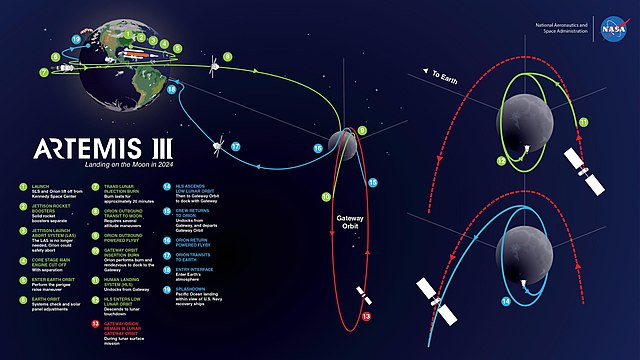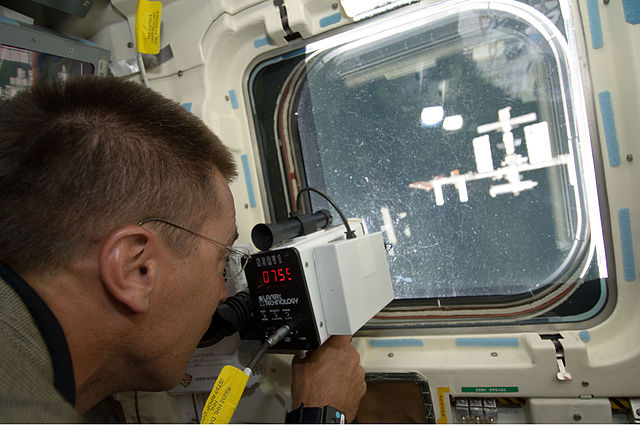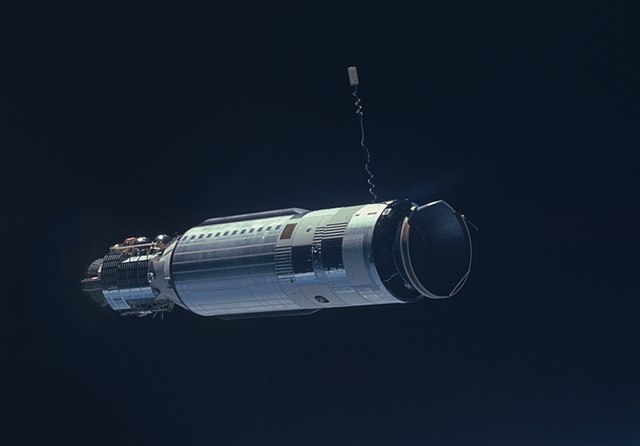Lunar orbit rendezvous (LOR) is a process for landing humans on the Moon and returning them to Earth. It was utilized for the Apollo program missions in the 1960s and 1970s. In a LOR mission, a main spacecraft and a smaller lunar lander travel to lunar orbit. The lunar lander then independently descends to the surface of the Moon, while the main spacecraft remains in lunar orbit. After completion of the mission there, the lander returns to lunar orbit to rendezvous and re-dock with the main spacecraft, then is discarded after transfer of crew and payload. Only the main spacecraft returns to Earth.
Apollo 11 Lunar Module Eagle rendezvousing with Command module Columbia in lunar orbit
John Houbolt explains Lunar orbit rendezvous
The planned trajectory of Artemis 3 illustrates the use of LOR
A space rendezvous is a set of orbital maneuvers during which two spacecraft, one of which is often a space station, arrive at the same orbit and approach to a very close distance. Rendezvous requires a precise match of the orbital velocities and position vectors of the two spacecraft, allowing them to remain at a constant distance through orbital station-keeping. Rendezvous may or may not be followed by docking or berthing, procedures which bring the spacecraft into physical contact and create a link between them.
Astronaut Christopher Cassidy uses a rangefinder to determine distance between the Space Shuttle Endeavour and the International Space Station
Lunar Module Eagle ascent stage rendezvous with the command module Columbia in lunar orbit after returning from a landing
Gemini 7 photographed from Gemini 6 in 1965
Gemini 8 Agena target vehicle






